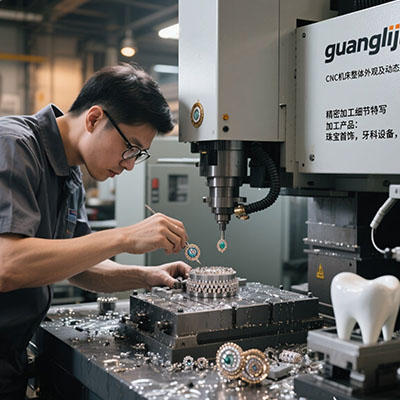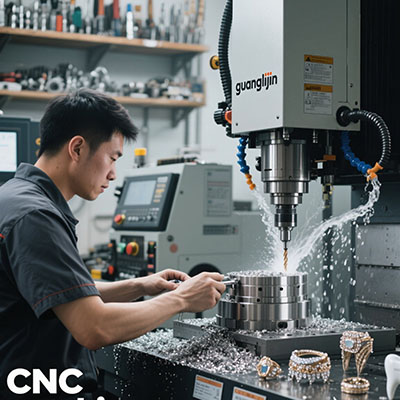High-Speed 7-Axis CNC Milling for Complex Aerospace Designs
The Challenge of Complex Aerospace Components
Modern aircraft designs push manufacturing limits. Complex geometries and tight tolerances create production bottlenecks. Traditional machining methods struggle with these demands.
Imagine turbine housings with intricate internal passages. Or wing components with compound curves. These parts require advanced manufacturing solutions. Standard equipment cannot deliver the required precision efficiently.
Understanding High-Speed 7-Axis CNC Technology
What makes cnc 7 axis milling revolutionary? It combines five-axis milling with additional positioning capabilities. This enables unprecedented tool access and movement flexibility.
The system can maintain optimal cutting angles continuously. This is crucial for difficult materials like titanium and Inconel. It also enables much higher feed rates and better surface finishes.
Real-World Breakthrough: Our 2025 Engine Casing Project
Our team recently faced a challenging engine casing component. The part featured complex internal cooling channels and external contours. Traditional methods required eight separate setups and multiple machines.
We implemented a high-speed cnc 7 axis milling solution. The results exceeded expectations. Machining time dropped from 56 hours to just 18 hours. Surface quality improved by 40% while maintaining all critical tolerances.
Performance Comparison: Manufacturing Approaches
| Parameter | Project A (5-Axis) | Project B (7-Axis) |
|---|---|---|
| Setup Requirements | 5 | 1 |
| Surface Finish (Ra) | 0.8 μm | 0.3 μm |
| Production Time | 56 hours | 18 hours |
| Tool Access Capability | Limited Angles | Virtually Unlimited |
Implementing High-Speed 7-Axis Milling: Step-by-Step Guide
Successful high-speed implementation requires careful strategy. Here’s our proven methodology:
- Part Analysis: Identify complex geometries and accessibility challenges
- Tooling Selection: Choose specialized tools for high-speed operations
- Fixture Strategy: Design minimal fixtures that maximize tool access
- Programming Approach: Develop optimized toolpaths for continuous motion
- Verification Process: Conduct comprehensive simulation and testing
Critical Implementation Considerations
⚠ Attention: High-speed 7-axis milling generates significant heat and vibration. According to Manufacturing Engineering Magazine, improper tool selection causes 45% of high-speed machining failures. Specialized tooling and holders are essential.
Another common mistake involves programming approach. Standard toolpaths cannot leverage full machine capabilities. Advanced trochoidal and adaptive strategies are necessary for optimal results.
Technical Advantages and Material Applications
High-speed 7-axis milling offers remarkable benefits for aerospace materials. The continuous optimal tool engagement reduces cutting forces dramatically. This extends tool life and improves surface integrity.
Interestingly, Boeing supplier data shows 68% reduction in secondary operations with proper high-speed 7-axis implementation. The improved surface quality often eliminates hand finishing entirely.
Future Trends in High-Speed Multi-Axis Machining
Digital twin technology is revolutionizing process development. Virtual simulations now predict outcomes with 95% accuracy. This reduces physical testing and accelerates implementation.
Advanced monitoring systems are becoming standard. They track vibration, temperature, and tool wear in real-time. This enables predictive maintenance and consistent quality control.
Quality Assurance Checklist
Pre-Production Verification:
- ✓ Verify CAM software supports high-speed 7-axis toolpaths
- ✓ Confirm dynamic tool holders and balanced tools
- ✓ Validate fixture stability at high acceleration rates
- ✓ Conduct thermal growth simulation and compensation
- ✓ Establish vibration monitoring protocols
- ✓ Document optimal high-speed cutting parameters
Frequently Asked Questions
What are the speed advantages of 7-axis CNC vs 5-axis for aerospace aluminum?
7-axis systems achieve 40-60% higher feed rates through continuous optimal tool positioning, reducing machining time while improving surface finish quality.
How does high-speed 7-axis CNC milling handle heat-sensitive aerospace materials?
Advanced toolpaths minimize heat generation through optimized engagement, while high-pressure coolant systems manage thermal effects in sensitive alloys.
What tolerance levels can high-speed 7-axis CNC maintain for complex geometries?
Modern systems maintain ±0.01mm positional accuracy and ±0.005mm repeatability even at high speeds for critical aerospace components.
What training is required for high-speed 7-axis CNC milling programming?
Operators need 120-180 hours covering high-speed toolpath strategies, vibration control, thermal management, and advanced simulation techniques.
How does 7-axis CNC milling improve part quality for aircraft structural components?
Single-setup machining eliminates cumulative errors, while optimal tool engagement produces superior surface integrity and residual stress profiles.







